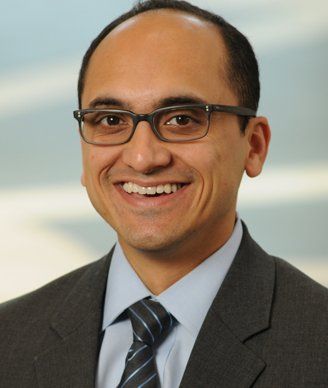Cancer Treatment Can Result in ‘Financial Toxicity’ for Patients and Families
As part of our coverage of the 2017 ASCO Annual Meeting, we discuss the impact of financial toxicity on cancer patients and their families.
S. Yousuf Zafar, MD

As part of our coverage of the American Society of Clinical Oncology (ASCO) Annual Meeting held June 2–6 in Chicago, we are speaking with S. Yousuf Zafar, MD, about the financial challenges patients often face following a cancer diagnosis. Dr. Zafar is associate professor of medicine at Duke University School of Medicine and a medical oncologist at the Duke Cancer Institute in Durham, North Carolina.
-Interviewed by Bryant Furlow
Cancer Network: What are some examples of the “financial toxicity” faced by patients with cancer, cancer survivors, and their families?
Dr. Zafar: In this era of expensive, long-term treatment and growing cost sharing, even well-insured patients are at risk for financial toxicity. Multiple studies over the past few years have described this phenomenon. Patients may be forced to cut back on food and clothing, not adhere to treatment, and even declare personal bankruptcy, all to make ends meet. Families describe having to work longer hours to cover expenses. Surprisingly, studies have also suggested that patients who are years out from their treatment still bear the financial burden of their treatment.
Cancer Network: What are the clinical implications?
Dr. Zafar: One of the most immediate concerns I have with the financial toxicity of cancer treatment is its impact on treatment adherence. Relatively high out-of-pocket costs for oral anticancer drugs have been associated with greater likelihood of nonadherence to those drugs. But the absolute monthly cost does not have to be very high to induce nonadherence. For example, patients paying less than $100 a month (and in many cases, less than $50 a month) are at greater risk of being nonadherent to oral drugs like imatinib for chronic myeloid leukemia or aromatase inhibitors for breast cancer. Additionally, a recent study found that patients with cancer who declare personal bankruptcy have a significantly higher risk of mortality compared with those who do not declare bankruptcy.
Cancer Network: Which patients are most affected by the financial impact of cancer treatment?
Dr. Zafar: Of course, the very poor and the uninsured are at highest risk. But beyond those populations, identifying patients at risk for financial toxicity can be challenging without knowing the details of their insurance plans. A large population at risk for financial toxicity includes patients with high cost sharing, in the form of co-insurance or high-deductible plans.
Cancer Network: How can physicians help their patients avoid or cope with financial toxicity?
Dr. Zafar: Our primary role as clinicians is to first do no harm, be it physical or financial. As a result, we must screen our patients for financial side effects in the same way that we screen them for the physical side effects of treatment. That means even asking simple questions like, “Have you been able to afford your treatment?” If patients are having trouble paying for treatment, we can rely on colleagues like social workers, financial counselors, and pharmacists to help patients find resources to better afford their care.
Cancer Network: Have drug companies’ patient-assistance and coupon programs helped reduce patients’ financial toxicity? Are there downsides to these programs?
Dr. Zafar: Copayment assistance programs are immediately helpful for patients, in that they remove that financial barrier of unaffordable copayments. However, some argue that over time, pharmaceutical-sponsored copayment assistance programs might artificially inflate prices. This might happen by allowing manufacturers to bypass insurance design by charging high prices, having insurance cover a portion, and then “discounting” the remainder while still making a profit on the drug. Regardless, until we have a better system in place, patients should still have access to those programs to ensure that treatment is affordable for them.
Cancer Network: Has the Affordable Care Act (ACA) helped to reduce the financial toxicity faced by patients with cancer?
Dr. Zafar: The ACA has clearly improved access to healthcare, with over 20 million people now insured who did not have insurance previously. And, costs are lower for the previously uninsured and very poor. However, there is no clear evidence that costs are lower for everyone else. Regardless, having insurance removes a critical barrier to access to cancer care.
Cancer Network: The American Health Care Act (AHCA) was passed recently by the US House of Representatives. How would this legislation affect patients’ financial toxicity issues, were it to be passed by the Senate and signed into law by President Trump?
Dr. Zafar: Based on current estimates, 23 million people would lose insurance under the AHCA as it currently stands. While insurers would not be allowed to deny coverage based on pre-existing conditions, they could still raise prices for those patients, thereby making some care unaffordable.
Navigating AE Management for Cellular Therapy Across Hematologic Cancers
A panel of clinical pharmacists discussed strategies for mitigating toxicities across different multiple myeloma, lymphoma, and leukemia populations.